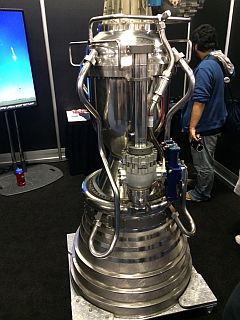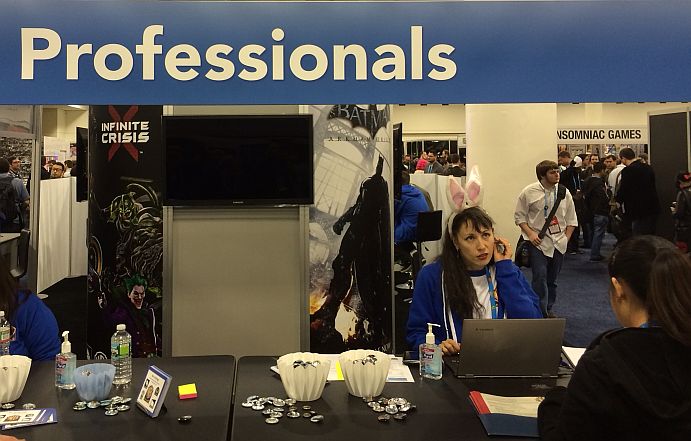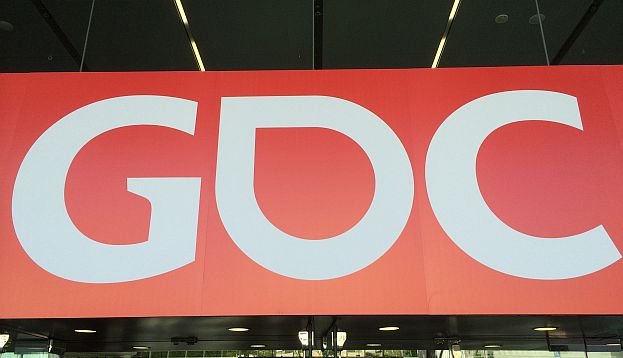The Buzz
Of course, the buzziest part of the show belonged to the burgeoning field of VR, fueled by Sony’s announcement of its Project Morpheus VR headset and Oculus’ debut of a new Oculus Rift development kit. There were several other VR projects being shown at smaller booths, too. Sony looked to have an interesting advantage with its Move controllers being quite useful with a VR headset. The larger issue, though, is just how big the audience will be for VR. Much depends on the pricing of the hardware, but ultimately it comes down to the experience being delivered. If there’s a compelling enough game (or other experience), people will pay the hundreds of dollars and put up with inconveniences to get that experience.
While Sony and Nintendo occupied massive booths in the Expo, Nintendo had an odd presence showing off the Nintendo Web Framework (a development environment for the Wii U) and Unity for the Wii U. The booth was not particularly crowded, as you might expect. Nintendo’s presence elsewhere in the GDC program was muted, too. While there were many sponsored sessions for Microsoft and Sony, Nintendo had none. It was probably a good call, because the attendance would have been light. The primary attractant for these sponsored seminars is installed base and rate of sales. Sony’s PS4 has already exceeded the total number of Wii U’s sold, and the Xbox One soon will if it hasn’t already. By the end of this year, the Wii U will have fallen far behind in the installed base of consoles.
Mobile, free-to-play games and startups were the subject of many panels, and interest in all of those were high. What we don’t see as clearly are the failures in those categories. For every Flappy Bird, there are thousands of mobile apps that fail to generate much interest or revenue. We hear about the launch of a new game company, especially when it’s founded by people with previous successes, but when those founders take jobs a few months later at a big tech company we don’t hear about it unless we’re connected to them on LinkedIn. The game company continues, but clearly the game didn’t get much traction if one of the founders got a job elsewhere.
The GDC itself was quite successful, setting a new record for attendance with over 24,000 people showing up. A survey of more than 2600 developers who attended last year showed some interesting trends. Some 20 percent will release their next game on a PS4, and 17 percent will release their next game on the Xbox One. Even current-gen consoles get some love, with 14 percent targeting the PS3 and 12 percent targeting the Xbox 360. The Wii U is only a target for 4 percent of developers. Meanwhile, some 51 percent said their next game would be on mobile, while 52 percent plan a PC or Mac game. That’s telling you something important about where the game industry’s key resource, talent, is aiming.
Jobs
The Career Center was packed with people at all times, and many companies were there looking for talent. Sony and Microsoft had prime positions there, as well as Warner Bros Interactive and Riot Games. Even SpaceX showed up displaying a rocket engine and hoping to lure top programmers away from coding virtual spaceships into a job coding real spaceships.

It’s who wasn’t there that was perhaps more revealing. No Activision Blizzard, no Electronic Arts, no TakeTwo, and no Nintendo. A company insider noted that GDC gets lots of job seekers, but many have little experience. His company gets better results with other recruiting efforts, having tried GDC in the past. Still, the companies that are growing rapidly find it useful to have booths at GDC, since they don’t want to overlook any source of applicants. Big publishers, for the most part, don’t seem to be expanding rapidly and thus don’t need to attract masses of applicants.
The Zeitgeist
Best quotes from the not-for-attribution, behind-the-scenes discussions at GDC:
Game designer and consultant: “I have made the jump from game designer to useless overhead.”
A former studio head, talking to executives: “They were giving me detailed advice on exactly how I should proceed with the game I was producing. I finally asked them, ‘Have either of you ever even been inside a building where a game was being made Lots of hemming and hawing, but I said ‘It’s a simple yes or no question/ Which is it ‘ And the answer came back, ‘No.'”
An industry veteran talking about the Expo: “Why is it that I have absolutely no idea what some of these booths are there for ”
Best tchotchke of the show had to go to the SpaceX coffe mug, which had “Occupy Mars” on one side and image of Mars on the other side. When you put a hot drink in it, the image of Mars turned into a beautiful Earthlike blue and green globe. Runner up was the drinking horn given out by Machine Zone to potential job applicants — dishwasher safe!

Visual of the show: The Career Center booth for Warner Bros. Interactive, with a line of people waiting to look for jobs, and the women behind the counter under the Professionals sign . . . wearing bunny ears! Yup, that’s the game industry.

